Golf’s 10 Best Ever Team Events
Featuring controversies, comebacks, compelling contests and concessions, we run down golf’s 10 best ever team events.


Featuring controversies, comebacks, compelling contests and concessions, we run down a list of golf’s 10 best ever team events.
Golf’s 10 Best Ever Team Events
Fundamentally, golf is an individual sport in which elite players compete for personal success and glory.
The challenge being to manage personal expectations and nerves, to deliver peak performance and beat all others.
But in a few events, the focus changes and a different ingredient is thrown into the competitive mix.
Protagonists in team events face the pressure of performing for country or continent plus their team-mates and supporters. This adds greatly to the excitement and, as a result, team events have produced some of the most thrilling tournaments in golfing history.
Professional and amateur team events have served up nail-biting finishes, astonishing comebacks, upsets, controversies and displays of sportsmanship that demonstrate the best things about our sport.
Get the Golf Monthly Newsletter
Subscribe to the Golf Monthly newsletter to stay up to date with all the latest tour news, equipment news, reviews, head-to-heads and buyer’s guides from our team of experienced experts.
Our list attempts to display those features and qualities while taking note of the variety of superb team events that exist in the game.
Here we take a look at golf’s 10 best ever team events.
10 – 2011 Walker Cup
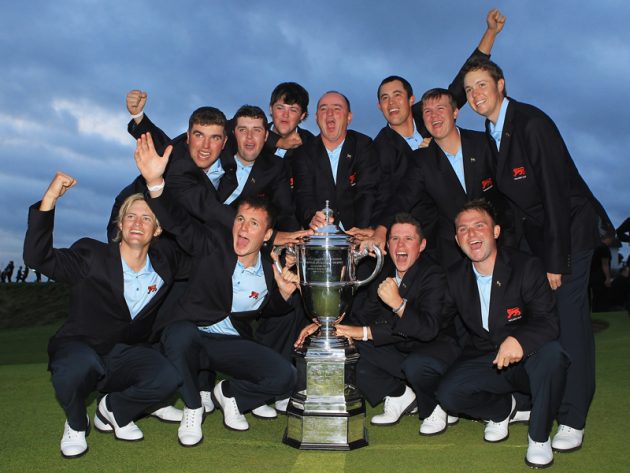
The U.S. side that travelled to Royal Aberdeen to contest the 43rd Walker Cup was touted as something of a “Dream Team” and a number of its members would go on to achieve significant successes in the professional arena.
The Americans had five of the top six ranked amateurs in the world – Patrick Cantlay, Jordan Spieth, Patrick Rodgers, Peter Uihlein and Harris English.
Despite playing on home soil, team GB&I were definite underdogs. But they established a two-point advantage by the end of the first day.
GB&I moved five points clear after the Sunday foursomes and needed just three points from the singles to claim victory.
They got off to a shaky start – Tom Lewis losing to Russell Henley and Andy Sullivan to Jordan Spieth.
Scotland’s Michael Stewart steadied the ship, seeing off Patrick Rodgers and a further win from Rhys Pugh plus half points from Jack Senior, Steven Brown and Paul Cutler saw GB&I pull of an unexpected and deserved victory.
9 – 1987 Ryder Cup
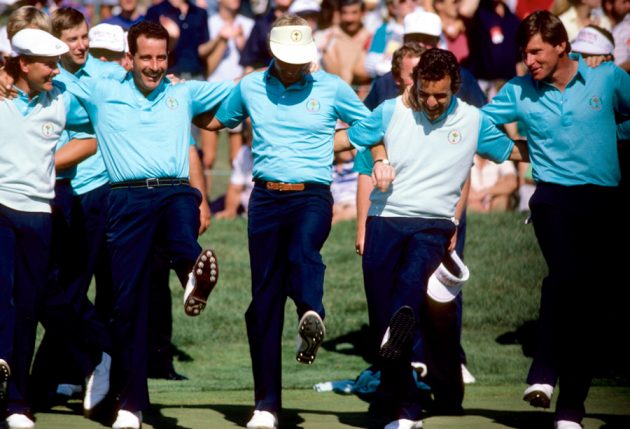
Team USA had never lost the Ryder Cup on home soil, but they had been beaten for the first time in 28 years two years previously at The Belfry.
Captained again by Tony Jacklin and spearheaded by the inspirational and intense Seve Ballesteros, the Europeans would not be intimidated, and were ready to firmly change the trajectory of Ryder Cup results.
Ballesteros and Jose Maria Olazabal established a partnership that would become the most formidable in Ryder Cup history.
They won three of four games at Muirfield Village. On day one, Europe won six of eight matches and their lead was extended to five points with just the singles to play.
The Americans fought back strongly and when European stars Ian Woosnam, Nick Faldo and Sandy Lyle were all beaten it looked like the visitors might fold.
But Eamonn Darcy and Seve earned their points and Bernhard Langer secured a crucial half with Larry Nelson to give Europe an historic win.
8 – 2015 Solheim Cup
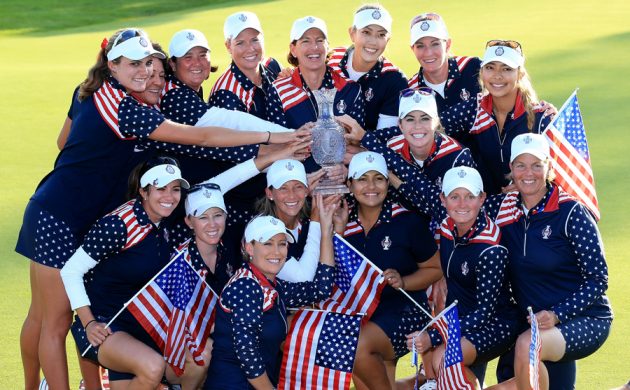
Europe had won two Solheim Cups in a row prior to 2015, including a first away win in 2013. Team USA were out to turn things round at Golf Club St. Leon Rot in Germany.
For the first four sessions, a reversal of Cup fortunes looked extremely unlikely.
The home side was dominant, 19-year-old Charley Hull in a starring role as she claimed four points from four matches.
Going into the final day singles, the U.S.A trailed by 10-6. But they had added motivation to fight back after Suzann Pettersen had controversially pointed out a putt had not been expressly given to Alison Lee at the climax of the Saturday four-balls.
It created bad feeling and would provide significant impetus to the American effort on the final day.
Things were relatively even in the first matches, but the USA steamrollered the bottom half winning seven of the last eight matches to reach 14.5 points and reclaim the Solheim Cup.
7 – 1991 Ryder Cup
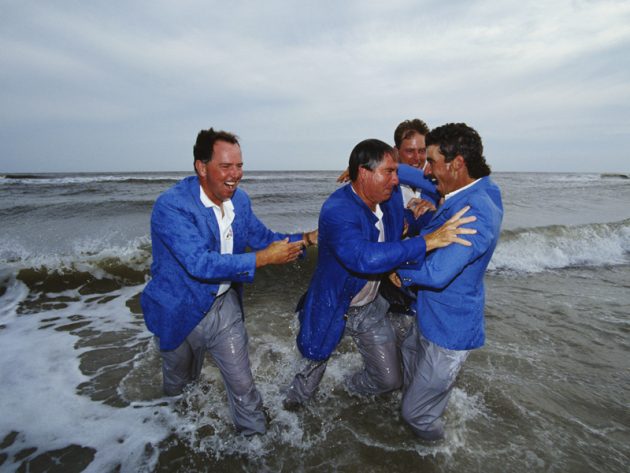
In an extremely heated contest that would become known as “The War on the Shore,” the USA won back the Ryder Cup for the first time since 1983.
Both teams featured an incredible selection of brilliant players at the top of their games.
American patriotism was running wild after victory in the Gulf War just months before.
Some home players even wore camouflage caps, further stoking the partisan behaviour of the American fans.
Steve Pate was injured, then not injured, then injured again – causing a controversial forced half with David Gilford in the final singles.
Seve and Olly accused Paul Azinger and Chip Beck of changing their ball in the Friday foursomes and Seve developed a timely cough during the Spaniards’ match with Ray Floyd and Fred Couples.
It all came down to the wire when Bernhard Langer faced “that putt” to win it for Europe. He missed, his knees sagged and his head went back, mouth open in agony as the U.S celebrations commenced.
6 – 2012 Curtis Cup
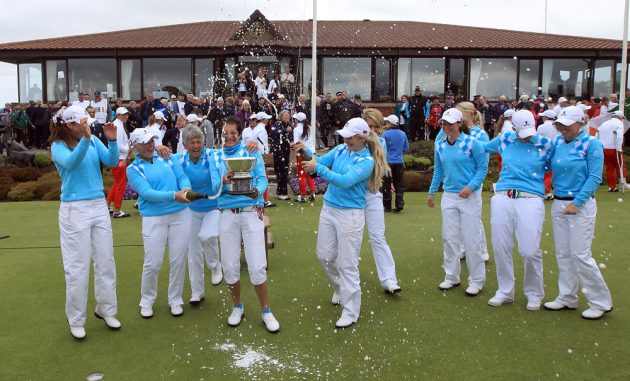
It had been 18 years since GB&I had won the Curtis Cup and they’d been soundly beaten in the previous instalment of the event at Essex CC in Massachusetts.
But the home side secured a memorable victory at Nairn, after which the Curtis, Walker, Ryder and Solheim Cups were all held on the east side of the Atlantic at the same time.
GB&I had to fight back from three behind twice during the early sessions. They lost 3-0 in the opening foursomes and were 6-3 back after Saturday morning’s foursomes.
The U.S. took a one-point lead into the final day singles, but GB&I came storming out of the blocks with wins for Kelly Tidy, Amy Boulden and Holly Clyburn.
16-year-old Charley Hull secured her point with a 5&3 win over Lindy Duncan and Stephanie Meadow completed the home victory, beating Amy Anderson by 4&2. GB&I took the Cup by a single point, 10.5-9.5.
5 – 2003 Presidents Cup

On paper, the sides for the 2003 Presidents Cup at Fancourt in South Africa looked to be evenly matched. Every member of the American side was ranked in the World’s top-30 as were nine of the 12 internationals.
And it proved to be as closely matched as the stats predicted.
When Davis Love III halved the last singles with Robert Allenby the final score stood at 17-17.
Unlike the Ryder Cup, the Presidents Cup is decided by a playoff between two men whose names are pre-placed in an envelope.
At Fancourt those names were Tiger Woods and Ernie Els – Two modern greats would go head-to-head to decide the fate of the whole event.
With all their teammates, plus captains and fans watching on, the pressure must have been immense.
On the first extra hole, both men made solid pars but on the next Els was in trouble having missed the green with his second.
He boxed a tricky 12-footer to keep it alive.
In encroaching darkness, Tiger made one of similar length on the next for a half.
It could perhaps have gone on one more hole, but team captains Gary Player and Jack Nicklaus agreed to call it a tie – an incredible finish to an exceptional tournament.
4 – 1969 Ryder Cup
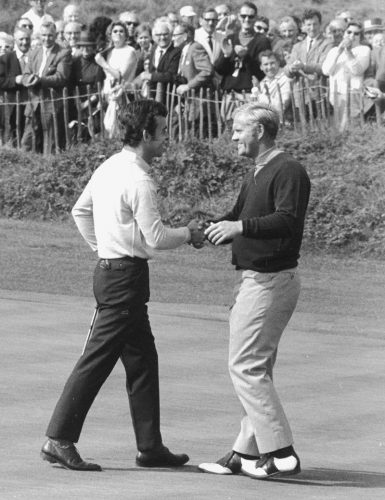
Tony Jacklin gave British golf a significant boost by winning The Open Championship at Royal Lytham in 1969 and his superb form on Lancashire’s links continued in that year’s Ryder Cup at Royal Birkdale.
The Englishman had dropped just half a point as the matches moved into the final set of singles.
GB&I held a 13-11 advantage, but their lead was eroded through the afternoon and it became increasingly apparent the contest would go to the wire, perhaps the closing match between Jacklin and Jack Nicklaus.
Quirks of the USPGA’s selection policy meant that Nicklaus was a seven-time Major champion by the time he played in his first Ryder Cup at Birkdale, but the fate of that event would be decided by an iconic gesture from the Golden Bear.
Jacklin holed a lengthy putt for eagle on the 17th to draw level and, with the overall score at 15.5 each, the whole Cup rested on the last hole.
Both men found the green in two and Jacklin putted first, ending two feet short. The American raced his birdie effort past before calmly holing for par.
Then, in perhaps the most sporting act in the history of golf, Nicklaus conceded Jacklin’s putt meaning a halved game and a tied Ryder Cup.
3 – 1999 Ryder Cup
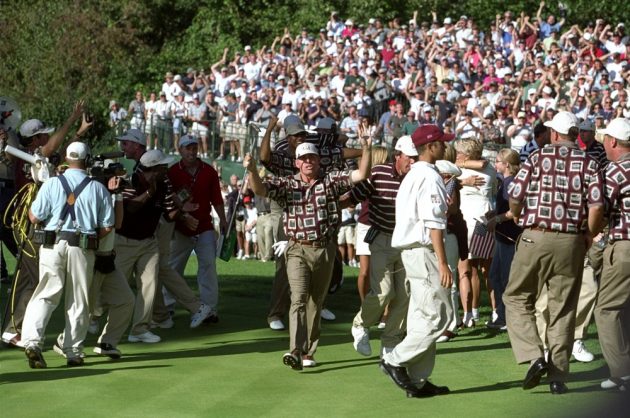
The “Battle of Brookline” is remembered as one of the most controversial and ill-tempered contests in golfing history.
The boisterous Boston fans heckled and abused European players to an unacceptable level from the word go and the U.S. players pushed gamesmanship to the limits.
The final straw came when Justin Leonard holed a putt on the 17th green in the singles to make birdie and, in all likelihood, win the Ryder Cup.
He went into a frenzied celebration as his entourage frolicked all over Jose Maria Olazabal’s line when the Spaniard still had a putt for a half.
But, like it or not, the contest was an amazing one and the U.S final day comeback deserves appreciation.
Europe produced some superb golf in the first four sessions, particularly the Friday four-balls, in which they took 3.5 points.
By the final day singles, the home side were 10-6 down. But they found another gear on Sunday. The Americans comfortably won the first six matches and by the time Jim Furyk dispatched Sergio Garcia, they were just a half point away from reclaiming the Cup.
It was Leonard who secured it, sparking those scenes that will always be remembered but many would like to forget.
2 – 2019 Solheim Cup
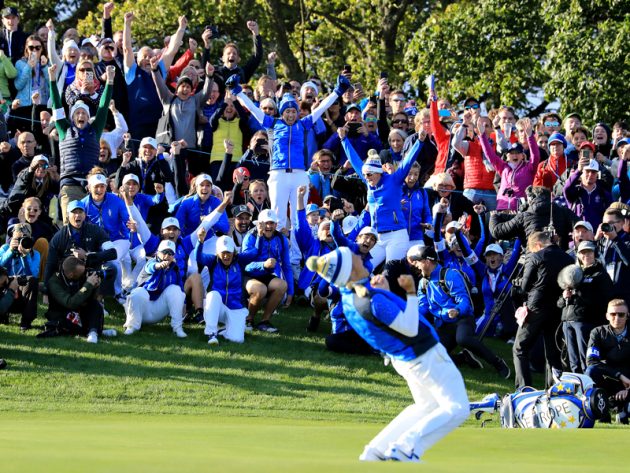
In writing, the final act of the 2019 Solheim Cup appears like a scene from a fantastical Hollywood movie - The World Number 665 holes the winning putt and promptly announces her retirement.
Having taken time out of the game to have a baby, Suzann Pettersen was originally selected as one of Catriona Matthew’s vice captains for Gleneagles.
But when she returned to play, Matthew took a chance and selected her as a wildcard – she would fully repay the Scot’s faith in her ability.
It all came down to the Norwegian but as Matthew said after the event, “Everyone will remember that final putt, but we had to get there.”
The contest was excellent and close throughout with no more than half a point in either direction given up in any of the first four sessions.
With the singles to play, the teams were tied on 8-8.
Early on Sunday, Europe looked to be in control then the USA fought back.
With only a few matches left on course, the cup looked destined to head back across the Atlantic. But the home side rallied.
Bronte Law displayed huge grit to get a win against Ally McDonald, teeing up Pettersen to make her career-ending and defining putt… Spine tingling stuff.
1 – 2012 Ryder Cup
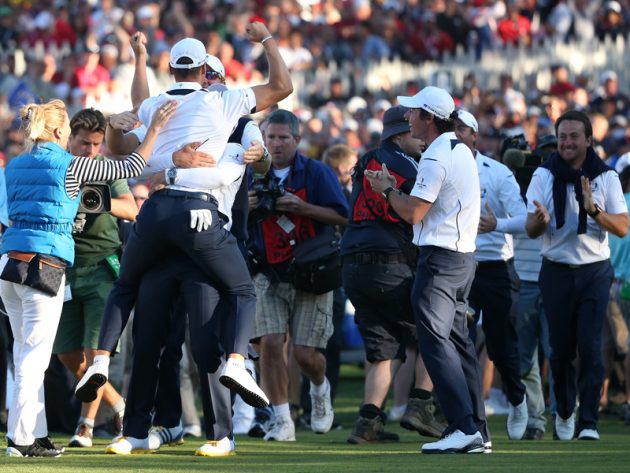
Not only was this the most thrilling golf event of all time, but it also featured the sort of spirit and sportsmanship that golf is famed for.
The two teams at Medinah were among the strongest ever seen in the Ryder Cup – the highest World Ranking of any of the 24 players was 35.
After a tied session in the opening foursomes, the USA began to dominate. With just two of Saturday’s fourballs out on the course, the USA led by 10-4.
But Luke Donald and Sergio Garcia battled to a narrow win over Tiger Woods and Steve Stricker while Ian Poulter put on a masterclass of refusing to lose, birdying the last five holes to finish one up on Jason Dufner and Zach Johnson.
Trailing 10-6 going into the singles, Europe had just a sliver of hope. Drawing on the emotional words of their captain Jose Maria Olazabal and thoughts of his great friend Seve, who had died the year before, the Europeans produced an unbelievable final round performance.
Early on Sunday, the board was flooded with blue as Luke Donald, Ian Poulter, Rory McIlroy, Justin Rose and Paul Lawrie won the first five matches on course – Rose producing some incredible heroics to see off Phil Mickelson who could only smile and applaud.
Sergio Garcia put Europe a point away from retaining the cup with a win over Jim Furyk and it fell to Martin Kaymer to deliver it in his match against Steve Striker. With two putts for the win, the German kept the suspense high by rolling his first effort seven feet by. But, displaying incredible composure, he knocked it in.
Olly looked to the sky, pointed at the image of Seve on his jacket and the tears started flowing.
Displaying exceptional sportsmanship, team USA and their captain Davis Love III were gallant in defeat – warm in their praise and congratulations for the visiting, winning side. It was a dramatic, passionate and enthralling contest, showcasing the very best of sporting rivalry, camaraderie and friendship – The Miracle of Medinah.

Fergus is Golf Monthly's resident expert on the history of the game and has written extensively on that subject. He has also worked with Golf Monthly to produce a podcast series. Called 18 Majors: The Golf History Show it offers new and in-depth perspectives on some of the most important moments in golf's long history. You can find all the details about it here.
He is a golf obsessive and 1-handicapper. Growing up in the North East of Scotland, golf runs through his veins and his passion for the sport was bolstered during his time at St Andrews university studying history. He went on to earn a post graduate diploma from the London School of Journalism. Fergus has worked for Golf Monthly since 2004 and has written two books on the game; "Great Golf Debates" together with Jezz Ellwood of Golf Monthly and the history section of "The Ultimate Golf Book" together with Neil Tappin , also of Golf Monthly.
Fergus once shanked a ball from just over Granny Clark's Wynd on the 18th of the Old Course that struck the St Andrews Golf Club and rebounded into the Valley of Sin, from where he saved par. Who says there's no golfing god?
-
 The 5 Rules I’ve Struggled With Most In My 40 Years As A Golfer
The 5 Rules I’ve Struggled With Most In My 40 Years As A GolferThere are some Rules that are easy to accidentally break and there are others that are difficult to accept. Here are five of them.
By Fergus Bisset Published
-
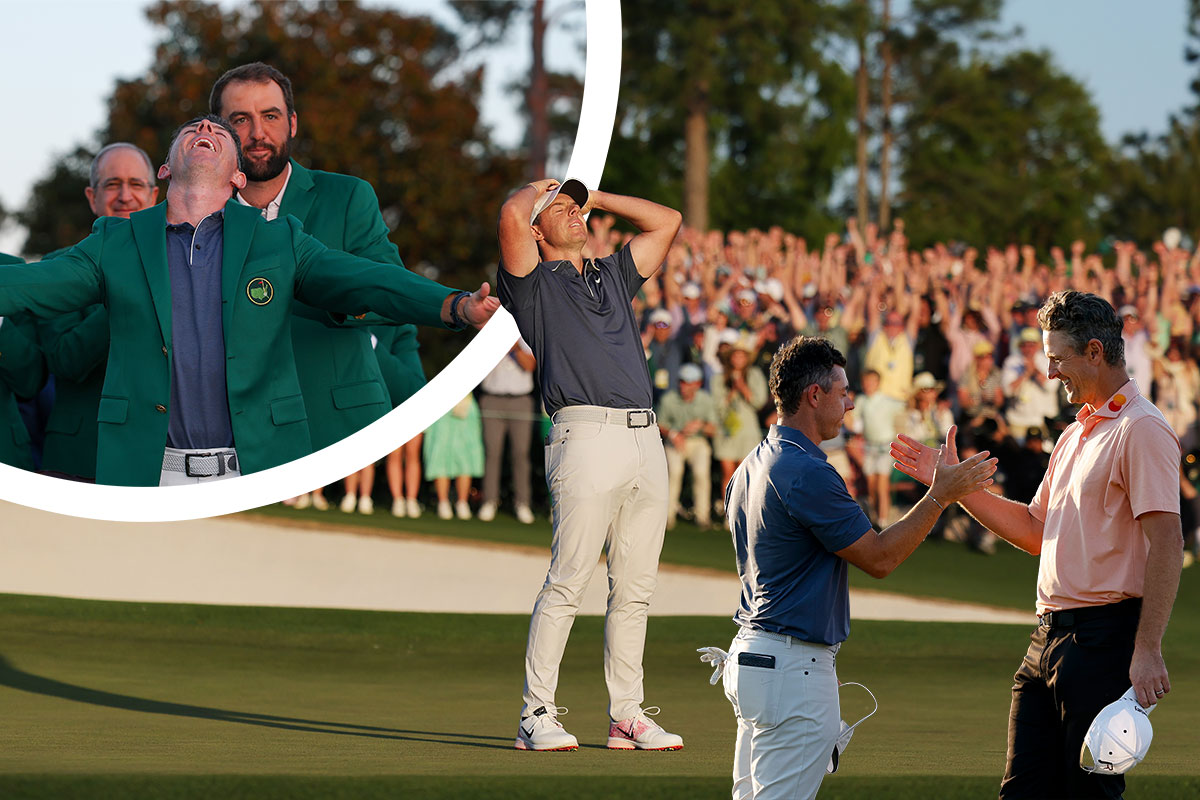 Was Rory McIlroy's Epic Masters Win The Greatest Major Of All Time?
Was Rory McIlroy's Epic Masters Win The Greatest Major Of All Time?Rory McIlroy winning The Masters and completing the Career Grand Slam was the perfect finish to an amazing tournament... but was it the most dramatic ever?
By Barry Plummer Published